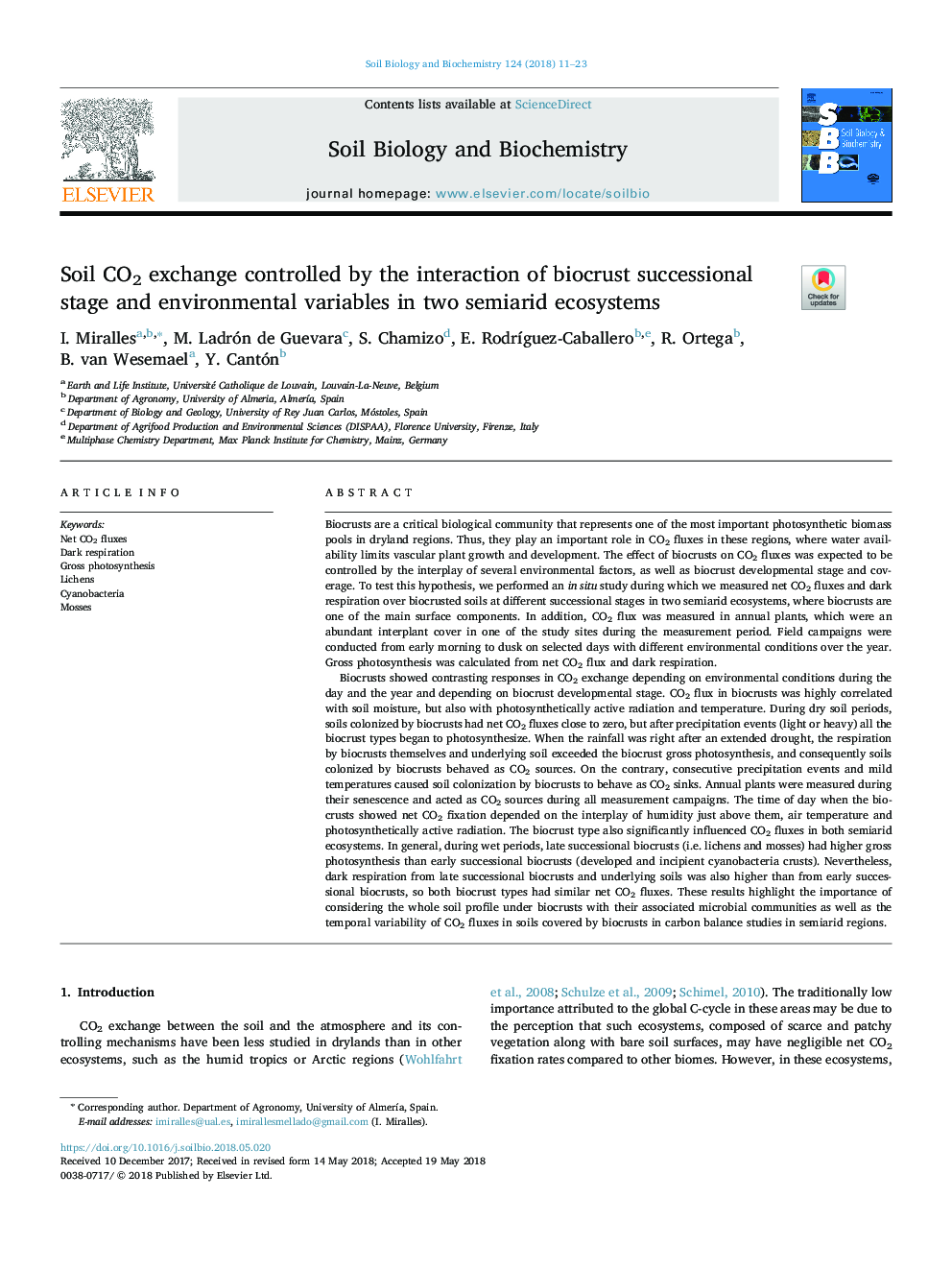| کد مقاله | کد نشریه | سال انتشار | مقاله انگلیسی | نسخه تمام متن |
|---|---|---|---|---|
| 8362523 | 1542560 | 2018 | 13 صفحه PDF | دانلود رایگان |
عنوان انگلیسی مقاله ISI
Soil CO2 exchange controlled by the interaction of biocrust successional stage and environmental variables in two semiarid ecosystems
دانلود مقاله + سفارش ترجمه
دانلود مقاله ISI انگلیسی
رایگان برای ایرانیان
کلمات کلیدی
موضوعات مرتبط
علوم زیستی و بیوفناوری
علوم کشاورزی و بیولوژیک
دانش خاک شناسی
پیش نمایش صفحه اول مقاله

چکیده انگلیسی
Biocrusts showed contrasting responses in CO2 exchange depending on environmental conditions during the day and the year and depending on biocrust developmental stage. CO2 flux in biocrusts was highly correlated with soil moisture, but also with photosynthetically active radiation and temperature. During dry soil periods, soils colonized by biocrusts had net CO2 fluxes close to zero, but after precipitation events (light or heavy) all the biocrust types began to photosynthesize. When the rainfall was right after an extended drought, the respiration by biocrusts themselves and underlying soil exceeded the biocrust gross photosynthesis, and consequently soils colonized by biocrusts behaved as CO2 sources. On the contrary, consecutive precipitation events and mild temperatures caused soil colonization by biocrusts to behave as CO2 sinks. Annual plants were measured during their senescence and acted as CO2 sources during all measurement campaigns. The time of day when the biocrusts showed net CO2 fixation depended on the interplay of humidity just above them, air temperature and photosynthetically active radiation. The biocrust type also significantly influenced CO2 fluxes in both semiarid ecosystems. In general, during wet periods, late successional biocrusts (i.e. lichens and mosses) had higher gross photosynthesis than early successional biocrusts (developed and incipient cyanobacteria crusts). Nevertheless, dark respiration from late successional biocrusts and underlying soils was also higher than from early successional biocrusts, so both biocrust types had similar net CO2 fluxes. These results highlight the importance of considering the whole soil profile under biocrusts with their associated microbial communities as well as the temporal variability of CO2 fluxes in soils covered by biocrusts in carbon balance studies in semiarid regions.
ناشر
Database: Elsevier - ScienceDirect (ساینس دایرکت)
Journal: Soil Biology and Biochemistry - Volume 124, September 2018, Pages 11-23
Journal: Soil Biology and Biochemistry - Volume 124, September 2018, Pages 11-23
نویسندگان
I. Miralles, M. Ladrón de Guevara, S. Chamizo, E. RodrÃguez-Caballero, R. Ortega, B. van Wesemael, Y. Cantón,